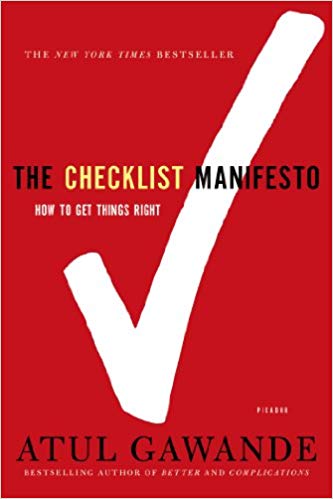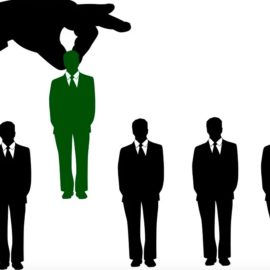

This article is an excerpt from the Shortform summary of "The Checklist Manifesto" by Atul Gawande. Shortform has the world's best summaries of books you should be reading.
Like this article? Sign up for a free trial here .
Is it important that your employees feel empowered? What are the benefits of enacting empowerment in the workplace?
We’ll look at examples of empowerment in the workplace and explore why empowered employees can make your company more successful.
Empowerment in the Workplace and Checklists
A striking feature of the building industry’s strategy for handling myriad steps correctly in complex situations is empowerment at work.
That’s not the way complexity and risk are usually handled elsewhere. Most authorities centralize power and decision-making via a command-and-control model. That’s one way of using checklists: to dictate instructions to workers down the line so they do things in a prescribed way.
A construction schedule checklist works that way — but it’s paired with the submittal schedule (the one that establishes communication processes), which is based on a different philosophy of power for solving non-routine problems. The submittal schedule pushes decision-making out from the center. People have the ability to make their own judgments based on their experience and expertise, but they’re required to communicate with others and take responsibility. This is a great example of empowerment in the workplace.
For example, because determining whether every detail is correct requires more knowledge than any one person can possess, building inspectors mostly make sure that builders have the right checks in place and require them to sign affidavits attesting that they have ensured the structure meets code requirements. They spread the authority and responsibility.
Why Empowerment in the Workplace Is Important
When authorities don’t relinquish power in a complex situation, they’re likely to fail. The response when Hurricane Katrina hit New Orleans on Aug. 29, 2005 illustrates both how centralized power fails and how empowerment works in such situations.
(Shortform note: While the Katrina example doesn’t demonstrate the use of checklists, it suggests why incorporating empowerment and communication into checklists, as the building industry does, is key to checklists’ success.)
Empowerment at Work and Walmart
Initial reports after the hurricane made landfall in New Orleans at 6 a.m. were falsely reassuring because, with power and cell service down, they were extremely incomplete. Director Michael Brown and Federal Emergency Management Agency (FEMA) announced the situation was mostly under control.
But by afternoon the levees had been breached and 80 percent of the city was flooded; 20,000 people were stranded at the Superdome, 20,000 were at a convention center, and another 5,000 had been deposited on an overpass by rescue helicopters. Tens of thousands were stranded in attics and on rooftops.
The government’s command-and-control system became overwhelmed, with too many decisions to make and too little information available. But authorities clung to the traditional model. They argued with state and local government officials over the power to make decisions, resulting in chaos. Supply trucks were halted and requisitions for buses were held up while local transit buses sat idle.
Wal-Mart executives, however, took the opposite approach from command and control. Recognizing the complexity of the circumstances, CEO Lee Scott announced to managers and employees that the company would respond at the level of the disaster. He empowered local employees to make the best decisions they could. This is a fantastic example of empowerment in the workplace.
Within 48 hours, employees had gotten more than half the 126 damaged stores up and running, and they began providing help wherever they saw needs — for instance, distributing diapers, water, baby formula, and ice. While FEMA couldn’t figure out how to move supplies, Wal-Mart managers created paper credit systems for first responders, providing them with food and supplies.
Individuals felt empowered to make their own decisions. The assistant manager of a severely flooded store drove a bulldozer through it, loaded up everything useable, and gave it away in the parking lot. When she learned that a local hospital was running out of drugs, she broke into the store’s pharmacy to get what the hospital needed.
Meanwhile, instead of issuing instructions, senior company officials facilitated the team — they set goals, measured progress, and opened communication lines with the front line and official agencies.
Given the common goal to do what they could and coordinate, employees came up with some spontaneously creative solutions, including:
- Mobile pharmacies as well as free medications at their stores for evacuees without a prescription.
- Free check cashing for payroll and other checks.
- Clinics that offered inoculations against flood-borne illnesses.
This is the true value of empowerment in the workplace. Within two days, the company got tractor trailers full of supplies past roadblocks and into the city. They provided water and food to refugees a day before the government appeared on the scene. In total, Wal-Mart sent 2,498 trailer loads of supplies and donated $3.5 million in goods to shelters and command centers.
The lesson is that under extreme and complex conditions, where a single person has insufficient knowledge to make the right calls, if people are empowered to act, work together, and adapt, they can achieve extraordinary success where centralized control would fail.
Incorporating Empowerment into Checklists
The building industry consistently and successfully manages complexity with its two-pronged approach to checklists:
- A schedule/checklist to ensure that important things get done.
- A checklist to make sure people communicate, coordinate, and take responsibility, while being empowered to tackle small and large problems and uncertainties.
The building industry’s approach combined with the experience of Hurricane Katrina suggests that in complex situations, checklists are essential for success. But they also must allow room for judgment coupled with communication and responsibility. We need to balance supervision and empowerment in the workplace.
———End of Preview———

Like what you just read? Read the rest of the world's best summary of "The Checklist Manifesto" at Shortform . Learn the book's critical concepts in 20 minutes or less .
Here's what you'll find in our full The Checklist Manifesto summary :
- How checklists save millions of lives in healthcare and flights
- The two types of checklists that matter
- How to create your own revolutionary checklist






